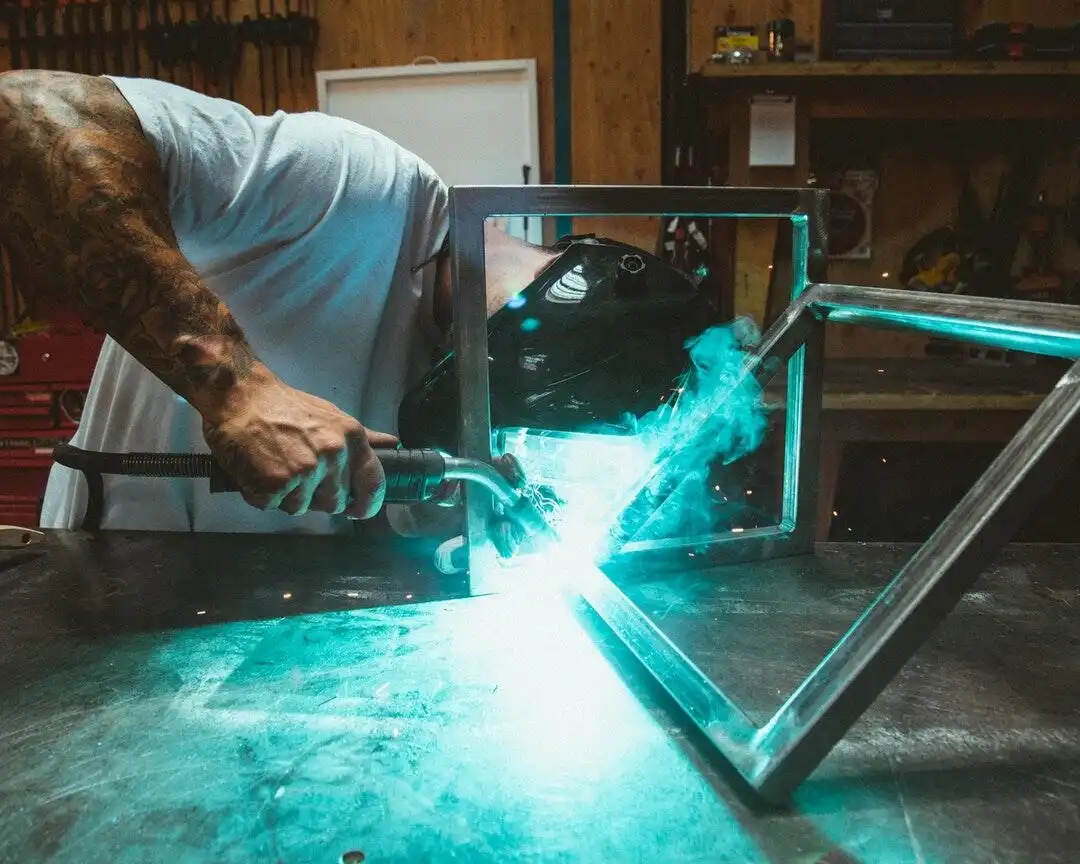Aluminum fabrication is the process of shaping aluminum into different products. It is popular due to aluminum’s light weight and strength. This makes aluminum ideal for car parts, building materials, and electronics.
The process starts with cutting aluminum sheets or bars to size. Workers then form and join these pieces using tools like presses and welders. In this blog, we will look closer at the process of aluminum fabrication from start to finish.
Extraction of Aluminum from Bauxite
Bauxite is the primary ore for aluminum production. To extract aluminum, bauxite is first crushed and then mixed with sodium hydroxide. This mixture is heated under high pressure to separate aluminum oxide from the impurities.
Aluminum oxide is dissolved in molten cryolite. This solution is then subjected to electrolysis, a process where an electric current passes through to separate pure aluminum. The leftover materials are an essential part of aluminum production as they are often recycled.
This process is energy-intensive, but it results in high-quality aluminum with a purity of up to 99.9%. The extracted aluminum is then processed and formed into different shapes to create various products.
Refining Alumina
The refining of alumina is a vital step in the aluminum fabrication process. First, the aluminum oxide extracted from bauxite is processed further to produce alumina powder. This powder is white and looks like sugar or salt.
The alumina powder undergoes the bayer process to remove any remaining impurities. It is mixed with a solution of sodium hydroxide and heated. As impurities separate out, pure alumina precipitates, ready to be collected.
Alumina is washed and dried to ensure its purity. The resulting material is then ready for smelting, where it will be transformed into aluminum. Each of these steps is essential for producing high-quality aluminum for different industries.
Casting Aluminum Ingots
Casting aluminum ingots is an essential step in aluminum fabrication. The process begins by melting the refined alumina in large furnaces. Once melted, the aluminum is poured into molds to form ingots.
These ingots are bars of aluminum, ready for further processing. During this step, aluminum alloying is crucial. Different metals are added to create alloys that meet specific industry needs.
After the alloying process, the ingots cool down and solidify. They are then removed from the mold and inspected. This ensures they meet quality standards before they are shipped out for use.
Rolling and Extrusion
Rolling and extrusion are key steps in aluminum fabrication. Rolling involves passing aluminum ingots through rollers to make thin sheets. These sheets are vital for making cans, foil, and car parts.
The extrusion process shapes aluminum by forcing it through a die. This creates items like tubes and bars. The process allows for complex shapes to be made with precision.
In both methods, temperature control is crucial. The metal must be heated just right to avoid cracks. These steps ensure that the final product is strong and durable.
Cutting and Shaping
Cutting and shaping are important stages in aluminum fabrication. One popular method is aluminum laser cutting, which uses a laser beam to cut through aluminum sheets with high precision. This technique is fast and produces clean edges.
Other cutting methods include using saws and shears. After cutting, shaping processes like stamping and bending give the aluminum its final form. These techniques allow for the creation of components for various applications.
Proper cutting and shaping ensure the aluminum pieces fit perfectly in their final products. Temperature and tool quality play vital roles in achieving precision. By mastering these techniques, industries produce reliable and efficient aluminum parts.
Welding and Joining
Welding and joining are crucial steps in industrial fabrication. These processes involve fusing aluminum pieces together to form a solid, unified structure. In welding, workers use high heat to melt the edges of aluminum sheets or bars, which then bond as they cool.
Joining can also be done using bolts, rivets, or adhesive materials. This method is useful when welding might weaken the aluminum. The choice between welding and joining depends on the specific needs of the final product.
Specialized tools and equipment are used to ensure precision. Safety is paramount, so workers wear protective gear to avoid accidents. The proper technique guarantees strong, durable connections in the aluminum structures.
Heat Treatment
Heat treatment is a vital step in aluminum fabrication. It involves heating the aluminum to a high temperature and then cooling it. This makes the aluminum stronger and improves its resistance to wear.
There are different types of heat treatments, including annealing and tempering. Annealing softens the aluminum so it can be shaped easily. Tempering, on the other hand, makes the aluminum harder and more durable.
Temperature control is crucial during heat treatment. If the metal gets too hot, it can become weak. If it stays too cool, it won’t gain the desired strength. Proper heat treatment ensures the final product is reliable and long-lasting.
Quality Control and Inspection
Quality control and inspection are key parts of aluminum fabrication. Inspectors check the aluminum for any defects or flaws. This step ensures that the final products meet industry standards and are safe to use.
Different tests are done to check for strength, weight, and size. Workers use tools like micrometers and X-ray machines to find any issues. By catching problems early, they make sure the aluminum products are of high quality.
Documentation is important to track quality. Each batch of aluminum is recorded and labeled. This helps in tracing any issues back to their source and improving the process for future batches.
The Final Word on Aluminum Fabrication
Aluminum fabrication is a vital process in many industries. The steps from extraction to quality control are essential for producing reliable products. The importance of precision and safety cannot be overstated.
Aluminum fabrication involves many complex techniques. Each step, from cutting and shaping to heat treatment, plays a crucial role. Proper execution ensures strong and durable aluminum products.
Understanding aluminum fabrication helps us appreciate the work behind everyday items. From cars to electronics, the reliability of these products begins with skilled fabrication. This makes aluminum an essential material in the modern world.
Did this article help you? If so, take a look at some of our other blog posts for more informative reads.




